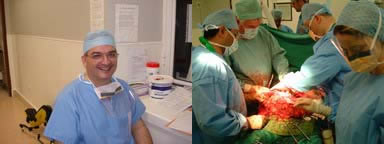 |
 |
|
|
All images, illustrations & flash animation are copyrighted to Deya Marzouk, unless stated otherwise. Copy is prohibited without written permission. Innovative techniques mentioned in this web site were all devised by Deya Marzouk. Please Credit Deya Marzouk if any material is copied from here (with prior permission only) |
This subject is a whole sub-specialty of radiology. This page is only meant to explain the tests for Medical students, but can be informative to patients as well
This may occasionally disclose constipation or the presence of megacolon and megarectum. It is very useful in patients with intestinal obstruction, as it may suggest the actual cause (e.g. volvulus, gall stone ileus etc.). It can also warn of impending caecal perforation in patients with the so called closed loop obstruction. Lastly it can warn about impending perforation in patients with inflammatory bowel disease complicated by toxic megacolon
This is used as an alternative to colonoscopy, as means of total colonic examination in certain situations. These include incomplete colonoscopy, patient refusal to undergo colonoscopy and investigation of the cause of acute severe lower GI haemorrhage. It is also the investigation of choice in patients with acute large bowel obstruction, when there is a need to differentiate functional (pseudo-obstruction) from obstruction caused by tumours, volvulus etc. (in the latter situation gastrograffin or dilute barium is used on unprepared colon)
Download a clip of virtual colonoscopy
This new technology could become an alternative to colonoscopy in the near future
This is part of anorectal physiology testing and used in patients with defaecation disorders (e.g. obstructed defaecation) to fully assess the contribution of various anatomical changes (e.g. rectocoele or internal rectal intussusception) to the defaecation disorder.
This is used in particular when there is suspicion of Crohn's disease (i.e. in investigating patients with abdominal pain and or diarrhoea). it is also useful in evaluation of possible enteric fistulae (abnormal communication between small bowel and other organs such as the sigmoid colon, vagina etc.) that may occur in patients with Crohn's disease or cancer
This is useful in investigating patients with acute lower (& upper) GI haemorrhage. It is also very useful for looking for angiodysplastic lesions and finding obscure causes of iron deficiency anaemia
This is useful in investigating patients with abdominal & pelvic pain. It may reveal gall stones, kidney stones, large abdominal or pelvic cysts. It is also useful in follow of cancer patients to check for liver recurrence (when it is usually done with contrast)
This is an important investigation in many patients with faecal incontinence to evaluate the presence of defects in the internal and external anal sphincters
This is used in staging patients with cancer (to evaluate the presence of spread of the cancer beyond the primary organ). It is also useful in investigating patients with unexplained weight loss
This is much more accurate than CT in assessing the local spread of rectal cancer, and guiding the decision to operate or to arrange for preoperative radiochemotherapy first (before resection)
This is one of the sensitive tools in discerning the nature of solitary liver lesions and also in assessment of liver secondaries before liver resection
This test is very useful in evaluation of suspected recurrence after surgery for colorectal cancer. It sometimes detect recurrences missed by CT scans alone and may well become a tool in investigating patients before primary surgery for cancer in the future.
 |
 |
|